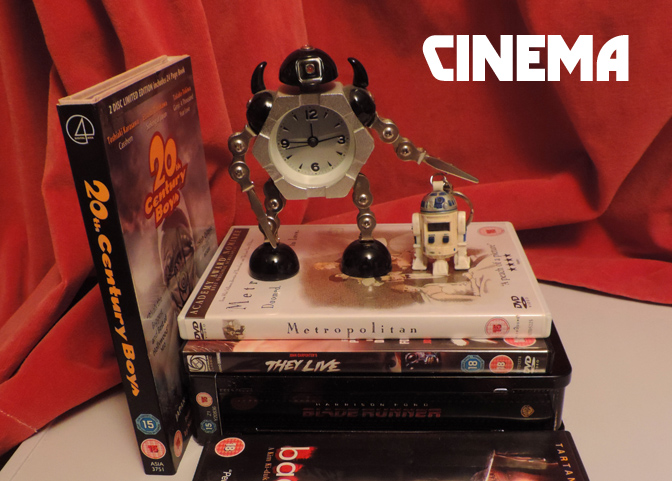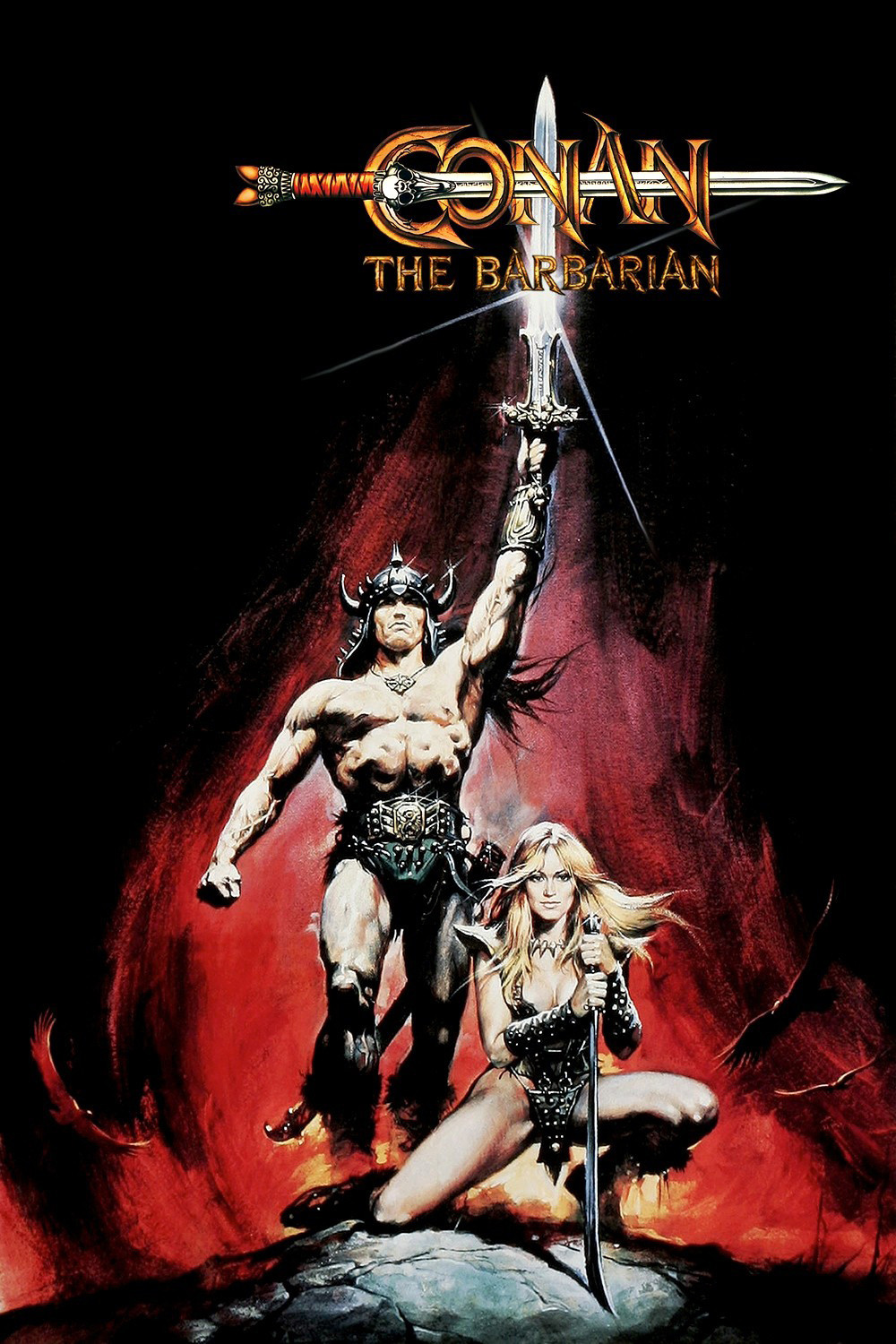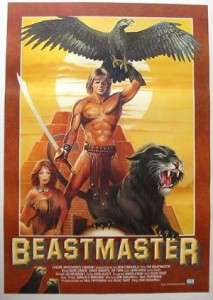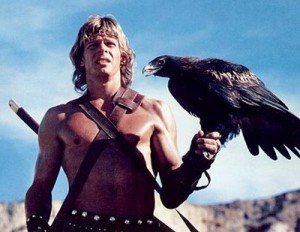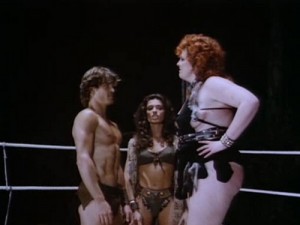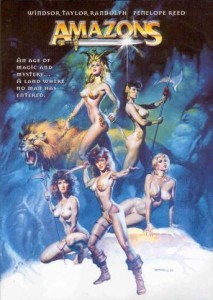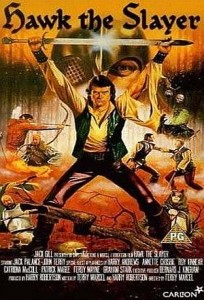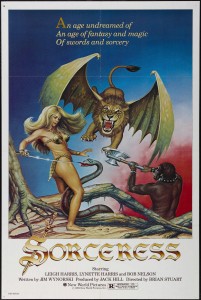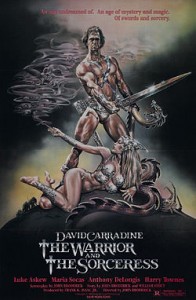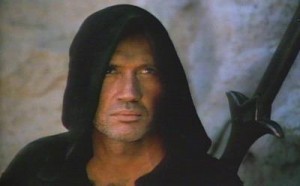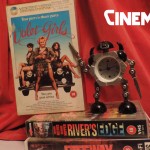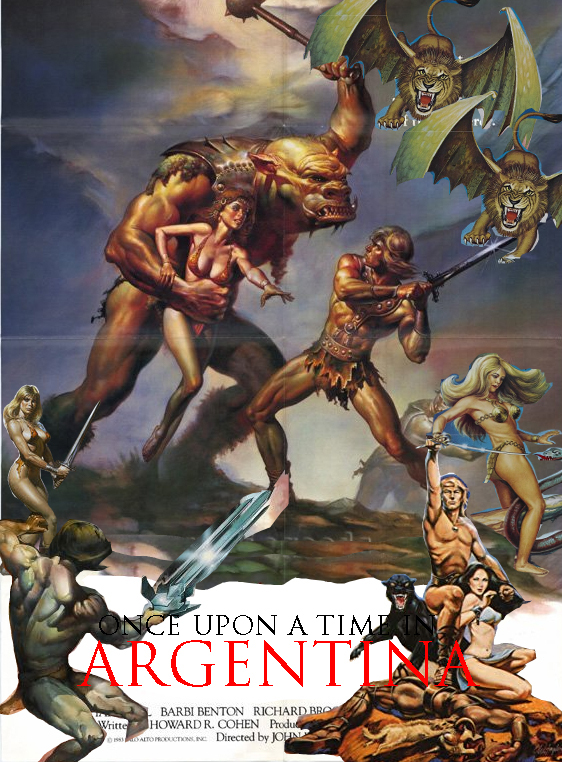
If the heroic fantasy movie has become synonymous, since Peter Jackson’s Lord of the Rings, with state of the art special effects, epic locations and massive budgets, there was a time, not so very long ago, when its natural home was the video rental shop and its scope, although theoretically limited only by the imagination, was in fact reliant on hackneyed, ready-made formulas and the cheapest epic locations that small studios could afford; usually, it turns out, in Argentina.
But although its ambitions were often as modest as the talent of its actors and its ideas were at best second (or third) hand, the 1980s swords & sorcery genre is not without its merits. Like the post-apocalyptic sci-fi with which the fantasy genre sometimes crosses over, most of the films under discussion here were basically the aftershocks of a couple of hugely successful films. Although not in the swords & sorcery mould, Star Wars (1977) and its sequels, were very influential on the genre, simply because they set the standard for fairly basic (and familiar) mythology-derived plots (well, less mythology than pulp literature, especially the works of Robert E Howard and his imitators) as vehicles for spectacular action. But again with the fantasy films, only theoretically spectacular; on the whole there is nothing more dramatic than swordplay and possibly a few flashes of crudely animated magic.
Related, but not so influential on the fantasy genre was Desmond Davis’ cheesy classic Clash of the Titans (1981), which to an extent revived an interest in mythology and adventure, but mostly renewed the popularity of Ray Harryhausen’s earlier masterpieces. John Boorman’s Excalibur (1981), too, was a high profile release, but although loved by many (myself included), it remains – like Boorman’s sci fi masterpiece Zardoz – something of an acquired taste, too specialised (and perhaps too British) to have much effect on the low budget video scene.
The biggest influence of all though – and the initiator of 80s swords & sorcery cinema proper – was John Milius’ epic, if plodding Conan The Barbarian (1982). Visually beautiful and symbolically powerful, Conan is in a different league from its imitators, but alas, many of them suffer from exactly the sort of pacing issues that make Conan feel like such a long two hours. The simple ‘orphan-seeking-revenge’ plot is one imitated again and again throughout the great sequence of cheap 80s fantasy movies. There were of course genuinely good, interesting and/or enjoyable fantasy movies made in the 80s; Ridley Scott’s flawed Legend has its good points, as do Ladyhawke, Labyrinth and even The Dark Crystal, but this article is not about those.
In the 80s, the shelves of the local video shops were heaving with ‘genre’ movies: endless numbers of post-Porkies, sub-Police Academy risqué comedies, post-Star Wars sci-fi adventures like the Ice Pirates, The Last Starfighter et al, horror series galore (a long article could be – and probably has been – written about Cannibal movies alone), a fertile seam of post- Mad Max, post-apocalyptic adventures.
This list isn’t anywhere near complete (as with all of these niche genres, the sheer quantity of these kinds of movies is amazing), not all of these movies are very watchable but I think they are all worth mentioning. Starting near the top end of the genre, an archetypal 80s Swords & Sorcery adventure is…
Beastmaster (1982)
Essentially Conan with ferrets, Beastmaster tells the tale of the He-Man-esque ‘Dar’ (Marc Singer), who goes on an animal-aided quest for revenge against those who killed his family.
The storyline, basic though it is, allows for the usual combination of encounters with bizarre creatures, evil warriors and comical companions. Less usual are the beasts that give Dar his title; a slightly aged-looking black panther, a bird and a bag of ferrets. What Beastmaster has that many of its peers (and influences) don’t, is watchability. It’s silly, it’s cheap and sometimes dubiously acted, but it isn’t boring.
Beastmaster has a particular kind of sequel, shared by others in the genre; the (presumably even cheaper) ‘fantasy hero goes through a portal into modern day USA’ plot. These are worthy of (and may get) an article of their own some day; the undisputed genre classic is of course Dolph Lundgren’s immortal Masters of the Universe (1987).
Where Conan the Barbarian was unusual was that, thanks to Arnie’s famous physique, it effortlessly lived up to its Frank Frazetta-style poster. The poster was in fact almost as influential as the movie; Peruvian fantasy art icon Boris Vallejo single-handedly made many a B-movie actor and actress look puny and pallid in comparison with his Olympian depiction of them. Boris is arguably one of the most accomplished painters of the 20th century, but it’s fair to say that his heroic, dynamic poster designs are one of the reasons that the Deathstalker series feels so disappointing. Worth a look though, especially…
Deathstalker (1983)
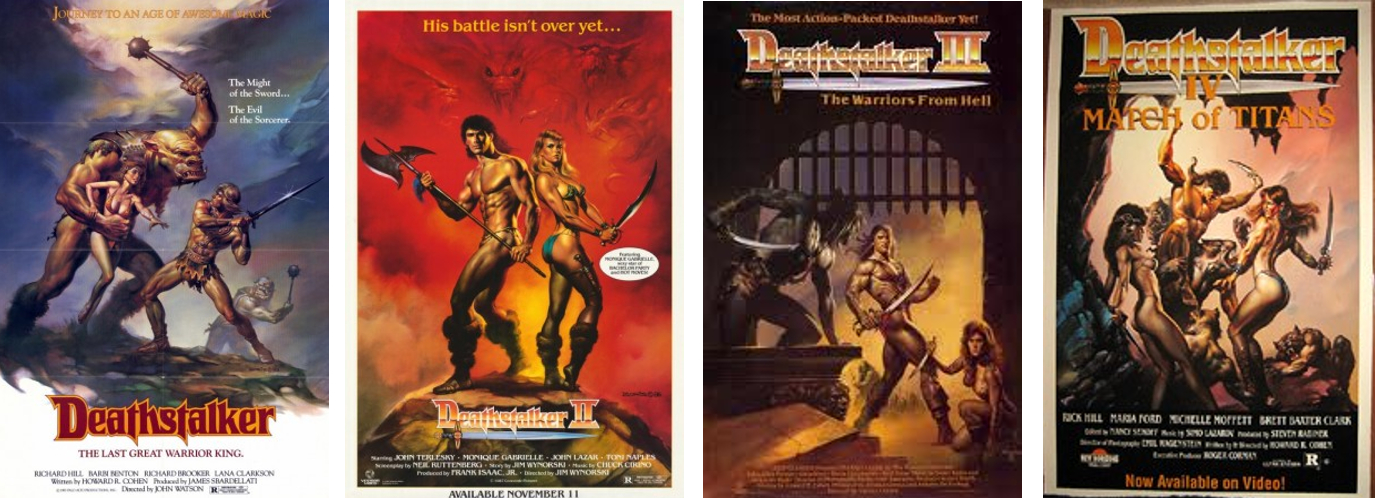
Post-Conan in the extreme, Deathstalker tells the story of a – by Conan/Boris standards – not-quite-muscular enough dork called Deathstalker, who is sent on a quest to find various objects and free a princess from a magician. If you had never read a single fantasy novel or seen a single fantasy movie this would still feel hackneyed and unremarkable. But if you like the clichés of the genre it’s plodding but enjoyable. In Evil Dead style, (though far less inspired), the first Deathstalker sequel was not to be a true sequel at all, more of a lampooning of the first movie and of the fantasy genre. And it went by the thrill-inducing name of…
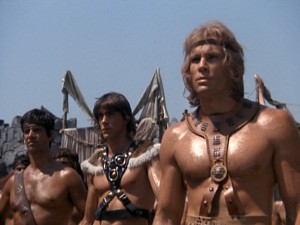
Deathstalker II (1987)
The ‘story’ of this movie is perfunctory in the extreme, with Deathstalker (now portrayed by the hardly-muscular-at-all John Terlesky) mainly indulging in smart-arsey wisecracking dialogue. Although the ratio of lame to funny is definitely weighted heavily towards the ‘lame’, there are a few funny lines and the overall feel of the movie is likeably silly. The hero may be less heroic, the scantily clad beauties less scantily clad, but as a film it is probably superior to the original nonetheless.
Deathstalker (John Terlesky) meets the legendary (but real) wrestler Queen Kong
Deathstalker III – Deathstalker and the Warriors from Hell (1988)
The third instalment of the Deathstalker saga introduced another lead actor (John Allen Nelson), an even cheaper production, fewer jokes and an almost statically aimless plot. The original Deathstalker, Rick Hill, returned for the final instalment (Match of Titans) in 1991, but although it retained some of the humour of the other sequels, it was, alas, severely lacking in the mayhem, violence and gratuitous nudity which gave the original movie what flavour it had and was therefore pretty pointless; great Boris poster/box cover art though, even if by the 90s the whole swords & sorcery genre seemed dated and lame.
Similar, but a lot better is…
Amazons (1986)
The key to the appeal of Amazons; basically another limp quest movie, is that despite the perfunctory plot, bad acting and very poorly staged fight sequences, the characters are extremely likeable and their soap-opera relationships are very watchable, even though the low-key villain (some bearded guy) undermines the drama a little. Unpretentious, trashy fun, but with a lot of heart and not at all boring; great Boris poster/cover also, obviously
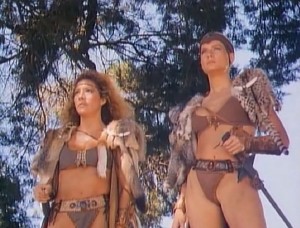
A fondly-remembered, if somewhat boring movie, Hawk the Slayer (1980) is a modest British film rather than a modest US production. Hawk… predates most of these movies, and is a wooden, plodding film, but a lot of fun for those who like the ‘unlikely band of adventurers; dwarf, elf, giant and man’ type of quest movie. Long stretches of it seem to consist of people aimlessly wandering around the woods, but the heavy breathing Jack Palance makes an excellent (if obtrusively American) villain as the scarred Voltan.
Sorceress (1982)
Inept, badly acted and so cheaply made that even though it was clearly acted in English, parts of it had to be dubbed later, this is nevertheless a fun and completely watchable movie. The plot doesn’t really bear repeating; there’s a sorceress in it.
And if watchable cheese is what you want, you could do far worse than…
Barbarian Queen (1985)
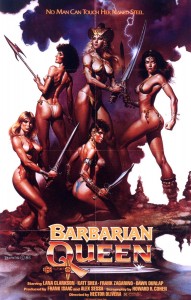 Very like Amazons, only delivering more of the gratuitous nudity implied in its cover art, Barbarian Queen is a simple revenge thriller/plodder. It’s a tougher and less sentimental movie than Amazons but you miss the heart of Amazons and its relative coldness makes it more perfunctory and less memorable. It does, however satisfy on the cheesy B-movie level as no doubt intended and honestly although its production values are abysmal in comparison with Milius’ Conan, it does at least move along at a reasonable rate
Very like Amazons, only delivering more of the gratuitous nudity implied in its cover art, Barbarian Queen is a simple revenge thriller/plodder. It’s a tougher and less sentimental movie than Amazons but you miss the heart of Amazons and its relative coldness makes it more perfunctory and less memorable. It does, however satisfy on the cheesy B-movie level as no doubt intended and honestly although its production values are abysmal in comparison with Milius’ Conan, it does at least move along at a reasonable rate
There’s yet more of the same in…
The Warrior and the Sorceress (1984)
Despite his undoubted talent, David Carradine’s presence was rarely the indicator of a good movie, and this is no exception. It’s a simple story based on Kurosawa’s classic Samurai drama Yojimbo. Carradine is a nameless, moody swordsman who becomes involved in the feud between two villages who are competing for the ownership of the only well in the district. A simple, dramatic plot can be no bad thing, but here the pacing and dialogue make for a long 81 minutes, despite the generally well-staged fight scenes and mainly decent acting.
<
Honourable mentions:
The Sword and the Sorceror (1982) Silly sword, fun cast
Wizards of the Lost Kingdom (1985) Childish, has one of those portal-through-time sequels
She (1984) The great Sandahl Bergman in a post-apocalyptic swords & sorcery movie, blah but fun
Ironmaster (1983) Cannibal movie director Umberto Lenzi tries his hand at something different, with tedious but not uninteresting results
By the early 1990s, the heroic fantasy genre seemed to have run its course and, despite the occasional one-off, it lay dormant until the twenty-first century, when Peter Jackson’s Lord of the Rings trilogy brought swords and dragons back into the mainstream once again. The genre has never really taken off again, but cheap LOTR cash-ins continue to proliferate (as do expensive ones, like World of Warcraft). The plots may remain the same, but changing filmmaking techniques, the tides of fashion and advances (and retreats) in special effects mean that now the old straight-to-video 80s swords & sorcery genre feels as remote and archaic as Cimmeria….

